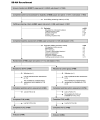Indicated Web-Based Prevention for Women With Anorexia Nervosa Symptoms: Randomized Controlled Efficacy Trial
- PMID: 35653174
- PMCID: PMC9204567
- DOI: 10.2196/35947
Indicated Web-Based Prevention for Women With Anorexia Nervosa Symptoms: Randomized Controlled Efficacy Trial
Abstract
Background: Although preventive interventions for eating disorders in general have shown promise, interventions specifically targeting individuals at risk for anorexia nervosa (AN) are lacking.
Objective: The aim of this study was to determine the efficacy of a guided, indicated web-based prevention program for women at risk for AN.
Methods: We conducted a randomized controlled efficacy trial for women at risk for AN. Assessments were carried out at baseline (before the intervention), after the intervention (10 weeks after baseline), and at 6- and 12-month follow-ups (FUs). A total of 168 women with low body weight (17.5 kg/m2≤BMI≤19 kg/m2) and high weight concerns or with normal body weight (19 kg/m2<BMI≤25 kg/m2), high weight concerns, and high restrained eating were recruited from 3 German universities as well as on the web and randomized to Student Bodies-AN (SB-AN; intervention group [IG]) or a wait-list control group (CG). The exclusion criteria were current Diagnostic and Statistical Manual of Mental Disorders, Fourth Edition-based full-syndrome eating disorders and serious medical or mental problems. The interventions were a cognitive-behavioral guided web-based prevention program (SB-AN) over 10 weeks (IG) and a wait-list CG. The primary outcomes were clinically significant changes in disordered eating attitudes and behaviors and change in BMI at 12-month FU in the group of participants who were underweight. The secondary outcomes were new onset of eating disorders, symptoms of disordered eating, and associated psychopathology.
Results: Data were available for 81.5% (137/168) of the women after the intervention and for 69% (116/168) of the women at 12-month FU. At 12-month FU, the IG participants showed larger decreases in Eating Disorder Examination total scores (38/48, 79% vs 33/58, 57%) than the CG participants and the IG participants who were underweight also showed larger clinically relevant increases in BMI (15/31, 49% vs 10/32, 32%) than the CG participants, but these differences were not significant. In addition, after the intervention and at 12-month FU, we found a significant increase in continuously measured BMI for the participants who were underweight and significant improvements in disordered eating attitudes and behaviors (eg, restrained eating as well as weight and shape concerns). At all time points, the rates of new-onset eating disorder cases were (nonsignificantly) lower in the IG than in the CG and the reductions in Diagnostic and Statistical Manual of Mental Disorders, Fifth Edition-based eating disorder syndromes were (nonsignificantly) higher in the IG than in the CG.
Conclusions: SB-AN is the first preventive intervention shown to significantly reduce specific risk factors for, and symptoms of, AN and shows promise for reducing full-syndrome AN onset.
Trial registration: ISRCTN Registry ISRCTN70380261; https://www.isrctn.com/ISRCTN70380261.
Keywords: anorexia nervosa; indicated prevention; internet.
©Corinna Jacobi, Bianka Vollert, Kristian Hütter, Paula von Bloh, Nadine Eiterich, Dennis Görlich, C Barr Taylor. Originally published in the Journal of Medical Internet Research (https://www.jmir.org), 02.06.2022.
Conflict of interest statement
Conflicts of Interest: None declared.
Figures


Similar articles
-
Efficacy of a Parent-Based, Indicated Prevention for Anorexia Nervosa: Randomized Controlled Trial.J Med Internet Res. 2018 Dec 14;20(12):e296. doi: 10.2196/jmir.9464. J Med Internet Res. 2018. PMID: 30552078 Free PMC article. Clinical Trial.
-
Web-Based Cognitive Behavioral Therapy for Female Patients With Eating Disorders: Randomized Controlled Trial.J Med Internet Res. 2015 Jun 18;17(6):e152. doi: 10.2196/jmir.3946. J Med Internet Res. 2015. PMID: 26088580 Free PMC article. Clinical Trial.
-
Prevention of eating disorders in at-risk college-age women.Arch Gen Psychiatry. 2006 Aug;63(8):881-8. doi: 10.1001/archpsyc.63.8.881. Arch Gen Psychiatry. 2006. PMID: 16894064 Free PMC article. Clinical Trial.
-
Medical instability in typical and atypical adolescent anorexia nervosa: a systematic review and meta-analysis.J Eat Disord. 2023 Apr 6;11(1):58. doi: 10.1186/s40337-023-00779-y. J Eat Disord. 2023. PMID: 37024943 Free PMC article. Review.
-
[Eating disorders - diagnosis and characteristics].Pol Merkur Lekarski. 2020 Apr 22;48(284):133-138. Pol Merkur Lekarski. 2020. PMID: 32352948 Review. Polish.
Cited by
-
Using web-based, guided self-help to bridge the waiting time for face-to-face out-patient treatment for bulimic-spectrum disorders: randomised controlled trial.BJPsych Open. 2024 Feb 26;10(2):e53. doi: 10.1192/bjo.2023.629. BJPsych Open. 2024. PMID: 38404025 Free PMC article.
-
Internet-based cognitive behaviour therapy for the prevention, treatment and relapse prevention of eating disorders: A systematic review and meta-analysis.Psych J. 2024 Feb;13(1):5-18. doi: 10.1002/pchj.715. Epub 2023 Dec 17. Psych J. 2024. PMID: 38105569 Free PMC article.
-
Estimation of minimal data sets sizes for machine learning predictions in digital mental health interventions.NPJ Digit Med. 2024 Dec 18;7(1):361. doi: 10.1038/s41746-024-01360-w. NPJ Digit Med. 2024. PMID: 39695276 Free PMC article.
References
-
- Hay PJ, Claudino AM, Touyz S, Abd Elbaky G. Individual psychological therapy in the outpatient treatment of adults with anorexia nervosa. Cochrane Database Syst Rev. 2015 Jul 27;2015(7):CD003909. doi: 10.1002/14651858.CD003909.pub2. http://europepmc.org/abstract/MED/26212713 - DOI - PMC - PubMed
-
- National Guideline Alliance (UK) Eating Disorders: Recognition and Treatment. London, UK: National Institute for Health and Care Excellence; 2017. May, - PubMed
Publication types
MeSH terms
LinkOut - more resources
Full Text Sources
Medical

